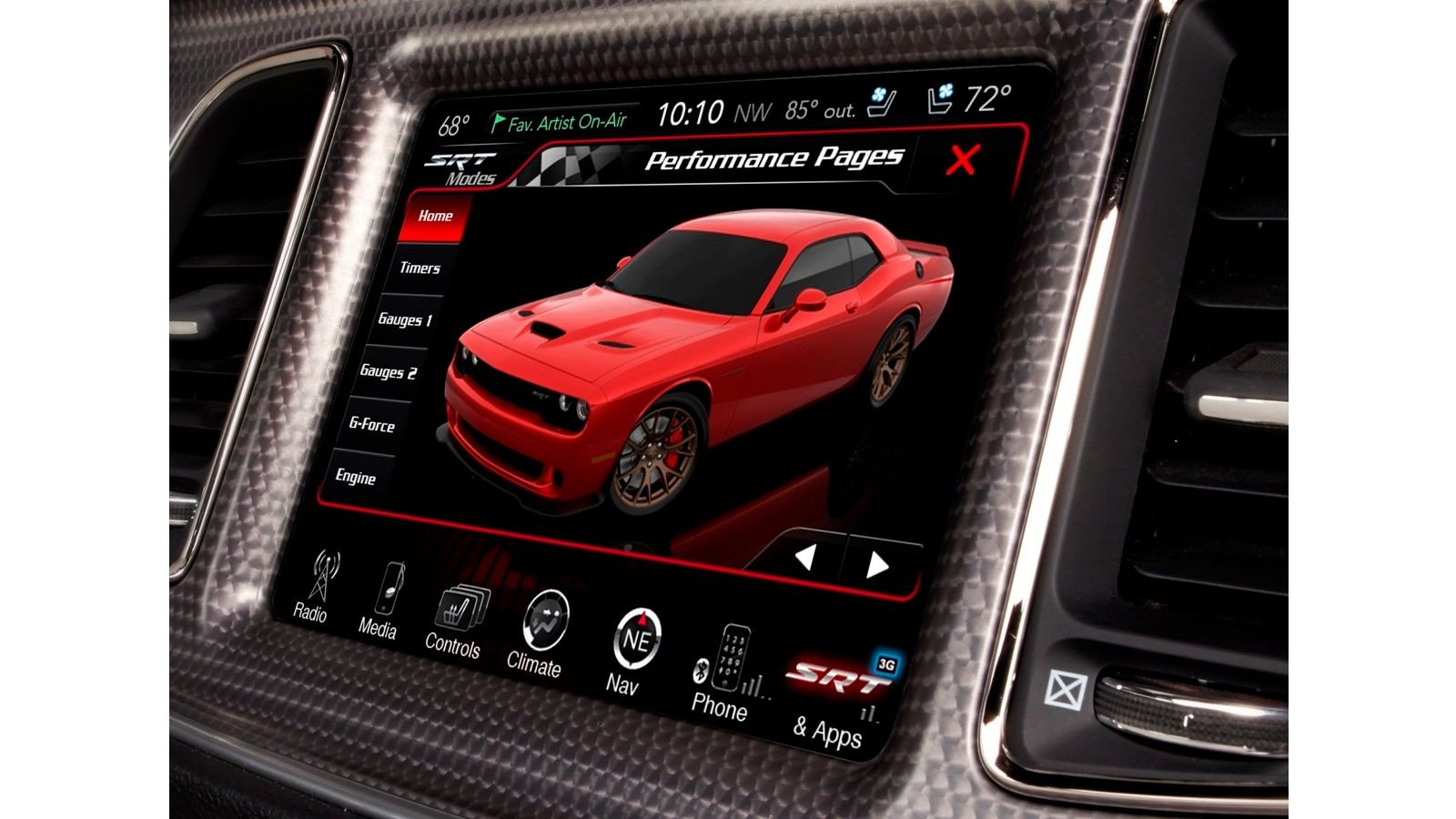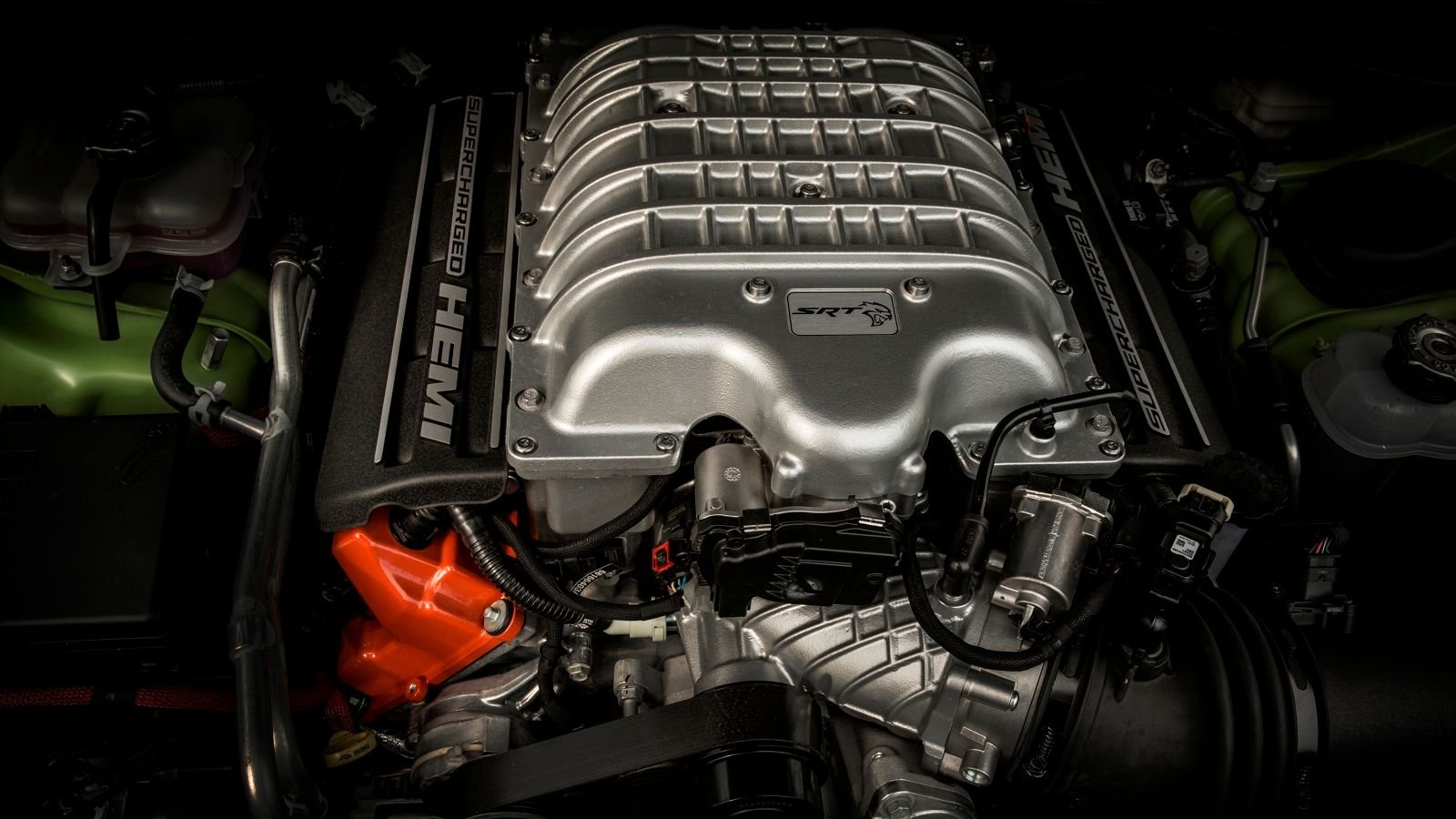One Week Road Test with the SRT and Hellcat
Slideshow: The thrill of wringing out 2 SRT Challengers in one week.












Dodge Challenger SRT
The biggest competition for the Chevrolet Camaro and Ford Mustang has always been the Dodge Challenger. This is odd, as the first two are compact pony cars, while this Dodge is huge, and heavy too, with a weight around 4,200-4,500 pounds. Planting a large engine under the hood makes up for the large vehicle size if you order the SRT option. We got an SRT Challenger for a one-week test drive. As a bonus, we also got an SRT Hellcat version, but only for a one day commute due to time restrictions.
Challenger: Old and New
To understand the Challenger of today, it helps to look at the Challenger of yesterday. Back in 1970, the biggest motor you could order was the 426 cubic inch Hemi. It was rated at 425 horsepower. 0-60 mph time was about 5.6 seconds, and quarter mile about 13.6. Gas mileage was dismal at 6/10 mpg. Starting in 1971 horsepower was rated at SAE-NET as installed in the car, which dropped the listed horsepower of the 426 from 425 to 350. The new 392 cubic inch Challenger SRT sold today is rated at 485 horsepower SAE-NET, which is an improvement of 135 horsepower over the old, not 60 as reported in the media. As expected, the newer car is much quicker, as we shall see.
>>Join the conversation about the wonders of the SRT and Hellcat models right here in Dodge Forum.
SRT Gauges/Performance Computer
The first thing to pay attention to on a new SRT is the computer system that controls the suspension and transmission performance. Settings include ECO, STREET, SPORT, and TRACK. There is a timer for 0-60 and quarter mile times, and a G-force gauge that records cornering ability. A LAUNCH MODE allows controlled burnouts from 1500-3500 rpm. While you don't really need all these gadgets, they do give you something to play with for the $51K price tag. The standard transmission is a 6-speed manual, but the 8-speed automatic is quicker, which is what we had.
>>Join the conversation about the wonders of the SRT and Hellcat models right here in Dodge Forum.
Challenger SRT 392 V8
Dodge lovers buy this car to go quick, and won't be disappointed. The computer showed a best 0-60 time of 4.6 seconds, and 0-100 in 10.6. That is the same time we got off the 2018 5.0 Mustang GT we tested a few months ago, even though the Ford is about 400 pounds lighter. No substitute for cubic inches! Fuel economy was 16/23 mpg in real-world driving. Our only complaint was the lack of a spare tire. This is done to save weight but doesn't mean much if you get a flat. Buy a spare!
>>Join the conversation about the wonders of the SRT and Hellcat models right here in Dodge Forum.
SRT Hellcat
Fuel economy of the SRT Hellcat is listed at 13/21 mpg. The odometer showed 1,345 miles before I had it at 12.8 mpg in city driving. But after a day of racing around the Los Angeles forest curved roads, we only observed 9.8 mpg. Still, that is better than that old 1970 426 Hemi at 6 mpg! Whether you are a Dodge fan or not, the SRT line is certainly worth a look if you are in the market for a sharp looking performance machine.
>>Join the conversation about the wonders of the SRT and Hellcat models right here in Dodge Forum.
Hellcat engine: 707 horsepower
Now to our second vehicle, the Hellcat Challenger and our one-day test drive. The 6.2 liter V-8 cranks 707 horsepower and 650 lb./ft. of torque. The air intake sucks 1060 cubic feet of air per minute to feed that supercharger spinning at 14,600 rpm. If you can reach the claimed speed of 200 mph, which we did not try, the 16-gallon tank can run dry in 13 minutes. The tab on this car was $77K.
>>Join the conversation about the wonders of the SRT and Hellcat models right here in Dodge Forum.
For help with your maintenance and repair projects, please visit our how-to section in the forum.
